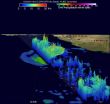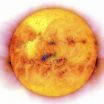(Press-News.org) MAYWOOD, Ill. -- Brain lesions in children can be especially challenging to diagnose, according to a report in the journal Frontiers in Neurology by a multidisciplinary team of Loyola University Medical Center physicians.
Lesions include tumors, abnormal blood vessel formations and abscesses and inflammation due to infections.
In the pediatric population, such lesions 'can have a large variety of underlying etiologies (causes), which can be challenging to differentiate on neuroimaging,' lead author Marisa McGinley, M.D., and colleagues report.
The Loyola physicians report the case of a 12-year-old boy who came to his primary care physician with staring episodes. During these episodes, which lasted about one minute, the boy was unresponsive and would make wringing motions with his hands. Afterwards, he would feel tired. His physician put him on an anti-seizure medication.
An MRI showed a lesion in the brain called the left mesial temporal lobe. The boy underwent brain surgery to remove a large portion of the lesion. He recovered well from the surgery, but continued to have occasional seizures. Five years after the surgery, he was having two to three seizures per month, despite taking two anti-seizure medications.
In order to get better seizure control, he underwent a second surgery to remove the remaining lesion. His anti-seizure medications gradually were reduced, and three years after the second surgery, he was seizure-free.
Pathology from the second surgery showed the lesion was consistent with an arteriovenous malformation (AVM), a tangle of abnormal blood vessels connecting arteries and veins. The AVM likely was present at birth.
The case highlights the challenge in distinguishing different lesions based on imaging, researchers write. MRIs can provide much information about a lesion, and it is important to carefully analyze available imaging to obtain as much information as possible. If diagnosis remains uncertain, it may be helpful to use other imaging techniques, such as PET scans and MR spectroscopy.
'Finally, when a diagnosis remains unclear, biopsy needs to be considered, but ultimately it is the entire work-up and clinical picture that will lead to a correct diagnosis,' researchers write.
INFORMATION:
Dr. Marisa McGinley is a resident in the department of neurology of Loyola University Chicago Stritch School of Medicine. Co-authors are Jose Biller, M.D., and Jorge Asconape, M.D., of the department of neurology; Haiyan Chen, M.D. of the department of pathology; and Douglas Anderson, M.D., of the department of neurological surgery.
The study is titled 'A pediatric patient with refractory seizures and a mesial temporal lobe lesion.B'
Promotion of handwashing with soap and weekly nail clipping are both successful strategies to decrease intestinal parasite re-infection rates in school aged Ethiopian children, according to a study published by Mahmud Abdulkader Mahmud and colleagues from Mekelle University, Ethiopia, in this week's PLOS Medicine.
The researchers reached these conclusions by conducting a cluster randomized controlled trial in which 367 parasite-negative school-aged children in Northern Ethiopia were randomly assigned to either the handwashing intervention, the nail clipping intervention, ...
Tropical cyclones are not too common in the Arabian Sea, but tropical cyclone 01A, now renamed Ashobaa, formed this week. NASA/JAXA's Global Precipitation Measurement or GPM core satellite flew over Ashobaa and gathered data that provided a 3-D look at the rainfall in the storm.
The GPM core observatory satellite flew over Ashobaa on the morning of June 8 at 0811 UTC (4:11 a.m. EDT). Tropical cyclone Ashobaa had sustained wind speeds of about 40 knots (46 mph) when the satellite passed overhead.
On June 9 at 0900 UTC (5 a.m. EDT), tropical cyclone Ashobaa had maximum ...
MADISON, Wis. -- Scientists have prior evidence that the hormone estrogen is a major driver in the growth of cervical cancer, but a new study examining genetic profiles of 128 clinical cases reached a surprising conclusion -- estrogen receptors all but vanish in cervical cancer tumors.
This counterintuitive finding, reported June 8 in the online Proceedings of the National Academy of Sciences, further bolsters the understanding of cervical cancer's progression and offers valuable new targets to fight the disease.
Lead author Johan den Boon, associate scientist with ...
The economic impact of the Energy Department's National Renewable Energy Laboratory (NREL) was $872.3 million nationwide in fiscal year 2014, according to a study by the University of Colorado Boulder's Leeds School of Business.
The study estimates NREL's impact to Colorado's economy totaled $701 million, a decline of 1.6 percent from the prior year. The slight year-over-year drop was largely attributed to a decline in major construction spending that came as NREL completed the planned build-out of its sustainable campus.
Jefferson County, where the largest concentration ...
Two of our nation's most advanced wind energy research and test facilities have joined forces to help the wind energy industry improve the performance of wind turbine drivetrains and better understand how the turbines can integrate more effectively with the electrical grid.
Through a Cooperative Research and Development Agreement (CRADA), the Energy Department's National Renewable Energy Laboratory (NREL) and Clemson University will partner to share resources and capabilities in the operation and development of testing facilities. The CRADA also includes the exchange ...
DOWNERS GROVE, Ill. - June 9, 2015 - The percentage of U.S. female physician authors of original research in major gastroenterology journals has grown over time, yet the percentage of women in the senior author position remains lower than expected based on the proportion of female gastroenterologists in academia. A look at the evolution of gender in the GI publishing landscape is presented in "Female authorship in major academic gastroenterology journals: a look over 20 years," published in the June issue of GIE: Gastrointestinal Endoscopy, the monthly peer-reviewed scientific ...
SAN FRANCISCO--Seismologists studying the recent dramatic upswing in earthquakes triggered by human activity want to clear up a few common misconceptions about the trend.
There is increasing evidence that these earthquakes are caused by injecting fluids from oil and gas operations deep into the earth. These human-caused earthquakes are sometimes called "induced earthquakes."
A Seismological Research Letters focus section to be published online June 10 addresses some common misconceptions about induced seismicity--the biggest of which is that it is primarily related ...
Scientists at the University of York have made a significant advance that could make cell-based treatments for arthritis less of a lottery.
Researchers in the Departments of Biology and Physics at York, working with colleagues at the Erasmus Medical Centre in Rotterdam, have identified individual stem cells that can regenerate tissue, cartilage and bone.
The stem cells are mixed within human bone marrow stromal cells (MSCs) but are similar in appearance and previously, scientists had difficulty in distinguishing between them. The York researchers isolated individual MSCs ...
An unexpected finding by an international team of scientists based at The University of Manchester and National Institutes of Health in America has shed new light on how immune cells are programmed to either repair or protect the body.
It's hoped the discovery will inform the development of better treatments for a range of conditions from inflammatory bowel diseases (IBD) to certain cancers.
The research, led by Dr John Grainger from the Manchester Collaborative Centre for Inflammation Research (MCCIR) and Dr Yasmine Belkaid from the National Institute of Allergy and ...
Large magnetic storms from the Sun, which affect technologies such as GPS and utility grids, could soon be predicted more than 24 hours in advance.
Coronal mass ejections (CMEs) are eruptions of gas and magnetised material from the Sun that have the potential to wreak havoc on satellites and Earth-bound technologies, disrupting radio transmissions and causing transformer blowouts and blackouts.
These mass ejections can cause problems with GPS technology - used by all kinds of vehicles, from cars to oil tankers to tractors. For example, they can affect the ability of ...

